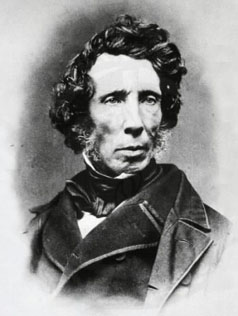| Friedrich Wöhler  Born: 31-Jul-1800 Born: 31-Jul-1800
Birthplace: Eschersheim, Germany
Died: 23-Sep-1882
Location of death: Göttingen, Germany
Cause of death: unspecified
Gender: Male
Race or Ethnicity: White
Occupation: Chemist Nationality: Germany
Executive summary: Artificial creation of urea German chemist, born at Eschersheim, near Frankfurt-am-Main, on the 31st of July 1800. In 1814 he began to attend the gymnasium at Frankfurt, where he carried out experiments with his friend Dr J.J.C. Buch. In 1820 he entered Marburg University, and next year removed to Heidelberg, where he worked in Leopold Gmelin's laboratory. Intending to practice as a physician, he took his degree in medicine and surgery (1823), but was persuaded by Gmelin to devote himself to chemistry. He studied in Berzelius's laboratory at Stockholm, and there began a lifelong friendship with the Swedish chemist. On his return he had proposed to settle as a Privatdozent at Heidelberg, but accepted the post of teacher of chemistry in the newly established technical school (Gewerbeschule) in Berlin (1825), where he remained until 1831. Private affairs then called him to Cassel, where he soon became professor at the higher technical school. In 1836 he was appointed to the chair of chemistry in the medical faculty at Göttingen, holding also the office of inspector-general of pharmacies in the kingdom of Hanover. This professorship he held until his death on the 23rd of September 1882.
Wöhler had made the acquaintance of Justus Liebig, his junior by three years, in 1825, and the two men remained close friends and allies for the rest of their lives. Together they carried out a number of joint researches. One of the earliest, if not the earliest, was the investigation, published in 1830, which proved the polymerism of cyanic and cyanuric acid, but the most famous were those on the oil of bitter almonds (benzaldehyde) and the radicle benzoyl (1832), and on uric acid (1837), which are of fundamental importance in the history of organic chemistry. But it was the achievement of Wöhler alone, in 1828, to break down the barrier held to exist between organic and inorganic chemistry by artificially preparing urea, one of those substances which up to that time it had been thought could only be produced through the agency of "vital force." Most of his work, however, lay in the domain of inorganic chemistry. The isolation of the elementary bodies and the investigation of their properties was one of his favorite pursuits. In 1827 he obtained metallic aluminum as a fine powder, and in 1845 improved methods enabled him to get it in fully metallic globules. Nine years afterwards Henri-Étienne Sainte-Claire Deville, ignorant of what he had done, adopted the same methods in his efforts to prepare the metal on an industrial scale; the result of Wöhler's claim of priority was that the two became good friends and joined in a research, published in 1856-57, which yielded "adamantine boron." By the same method as had succeeded with aluminum (reduction of the chloride by potassium) Wöhler in 1828 obtained metallic beryllium and yttrium. Later, in 1849, titanium engaged his attention, and, proving that what had up to that time passed as the metal was really a cyanonitride, he showed how the true metal was to be obtained. He also worked at the nitrides, and in 1857 with H. Buff carried out an inquiry on the compounds of silicon in which they prepared the previously unknown gas, silicon hydride or silicuretted hydrogen. A problem to which he returned repeatedly was that of separating nickel and cobalt from their ores and freeing them from arsenic; and in the course of his long laboratory practice he worked out numerous processes for the preparation of pure chemicals and methods of exact analysis. The Royal Society's Catalogue enumerates 276 separate memoirs written by him, apart from 43 in which he collaborated with others.
University: University of Marburg
University: University of Heidelberg (1823)
Teacher: Privatdozent, University of Heidelberg
Professor: University of Göttingen (1836-82)
Copley Medal 1872
Do you know something we don't?
Submit a correction or make a comment about this profile
Copyright ©2019 Soylent Communications
|